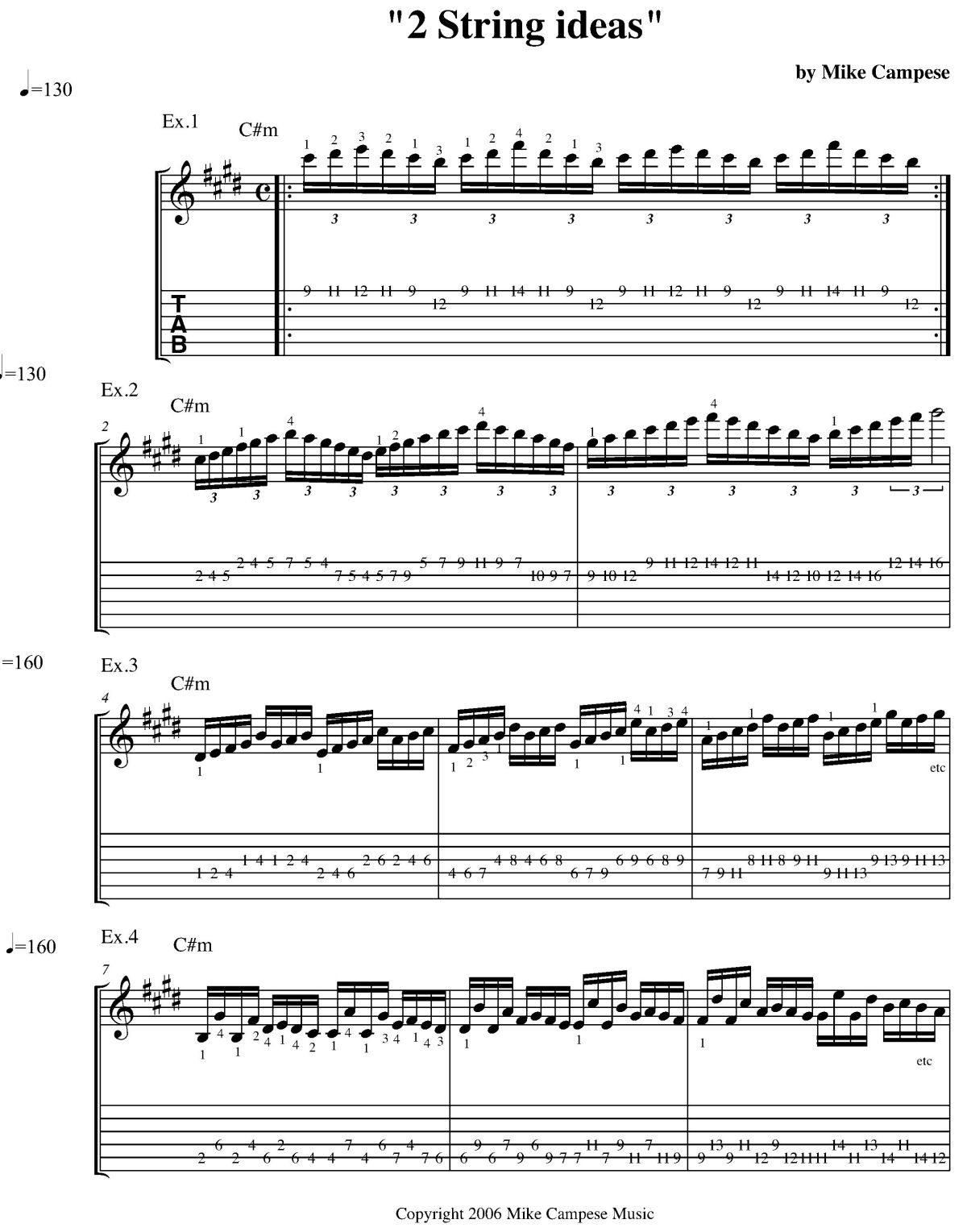Welcome back! In this lesson I will be showing you some examples you can use to practice on one string. Single string practice is one of the best ways to memorize your scales on the neck and help you break out of the patterns you have been stuck in. This form of practice is one of the best ways to help you with visualizing the fretboard, which will improve your soloing drastically.
In the last lesson I showed you some one string examples to help learn your neck and to improve your soloing. This lesson I will show you some 2 string examples you can use to learn the neck and to increase your speed. All of the examples are in the C# minor Scale (C#, D#, E, F#, G#, A. B). Be sure to do these in all keys and use a metronome. It is important to start slowly, then gradually build up speed. You can hear some of these same examples in my playing. On my new CD, "Hidden Treasures", I use some similar examples played on the acoustic guitar, which is great to practice on, because you can't hide your mistakes.
Example 1 Is a great 2 string idea to increase your speed and coordination; this one sounds cool if you move it across the neck. It can be also used in a musical situation. I use this in my latest instrumental. You can take the first 2 beats of this idea and move it across the neck. Also, make sure you keep both hands in sync.
MP3 - Example 1
Example 2 sounds cool at blazing speeds. It is a 16th note triplet pattern - another great coordination and speed builder. I like to use this one at the end of a solo. This one can be kind of tricky, especially on the G and B strings. Be sure to follow the fingerings.
MP3 - Example 2
Example 3 really sounds cool moving across the neck ascending and descending. It is a great one to help you learn the neck and to help strengthen your pinky and increase your coordination. Work this one through your 3 note per string patterns, and then try to reverse the pattern.
MP3 - Example 3
Example 4 Is a very unorthodox pattern that sounds unusual, and can be tricky for the right hand. This one also sounds cool across the neck, and is great for your technique. Try palm muting this one, and move it across the neck. Also, it is important to accent these examples when playing them - they will be more effective this way.
MP3 - Example 4

I just gave you some ideas to start you thinking in this way, you must make up your own. All of these types of examples can be used in a musical situation, but don't over play them - use them tastefully, or they could end up annoying your fans.
If you have any questions, feel free to email me. Be sure to check out my CDs on this amazing site and check out my new CD release, "Hidden Treasures". Also visit mikecampese.com for more information.
Mike Campese is an all-around music performer, session artist and teacher competent in many musical styles, electric and acoustic. He has studied at G.I.T. (Honors Graduate), and with Paul Gilbert, Norman Brown, Stanley Jordan, Scott Henderson and Keith Wyatt.